Search for life in the solar system
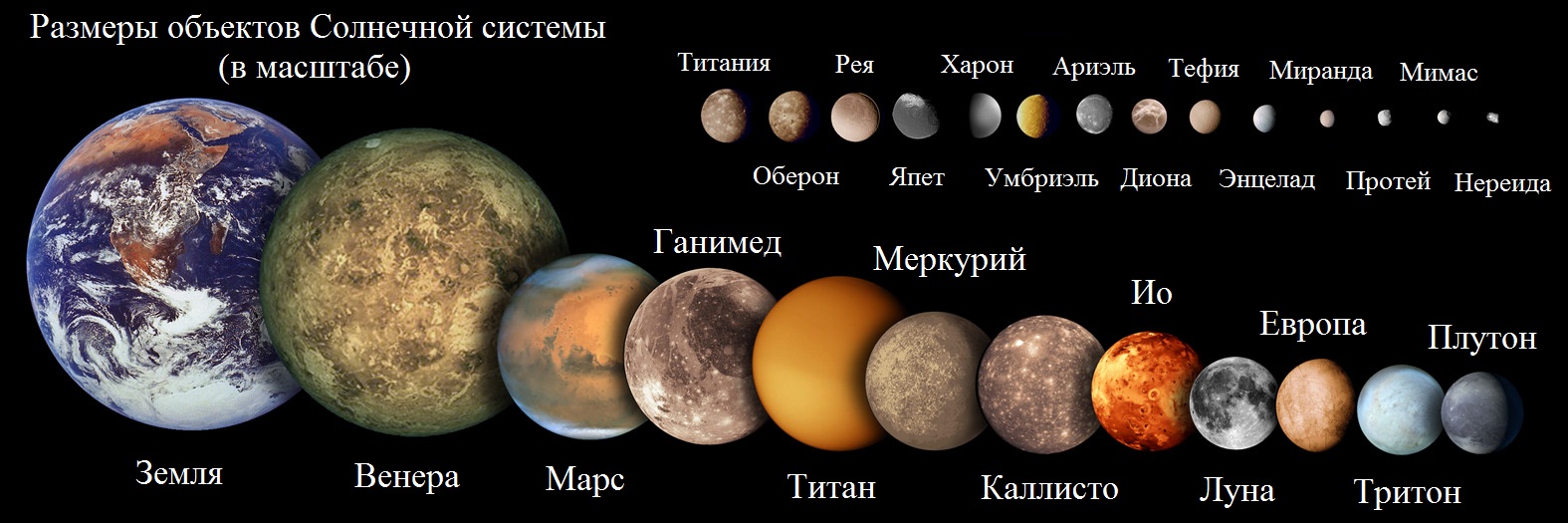
As it is known, the Martian canals , so disturbing the minds of earthlings at the turn of the 19th and 20th centuries, with the arrival of Mars Mariner 4 in 1965, turned out to be an optical illusion. And with the landing on the surface of a pair of "Vikings" in 1976, the chances of repeating the plot of "Aelita" were completely reduced to zero. Mars more and more resembled a planet from the works of Cyrus Bulychev :
Planet Shelezyaka. Minerals not. There is no water. No vegetation. Populated by robots.But at the same time, in 1979, with the pictures of the satellite of Jupiter of Europe taken by Voyager-2, mankind once again had a faint hope that under its ice crust there was an ocean of liquid water (and therefore, perhaps life). It was only in 1995 that the “Galileo” apparatus was able to confirm the presence of the under-ice ocean, and later on other satellites of Jupiter and Saturn, oceans of liquid water were discovered, which will be discussed below.
Infographics
Ceres
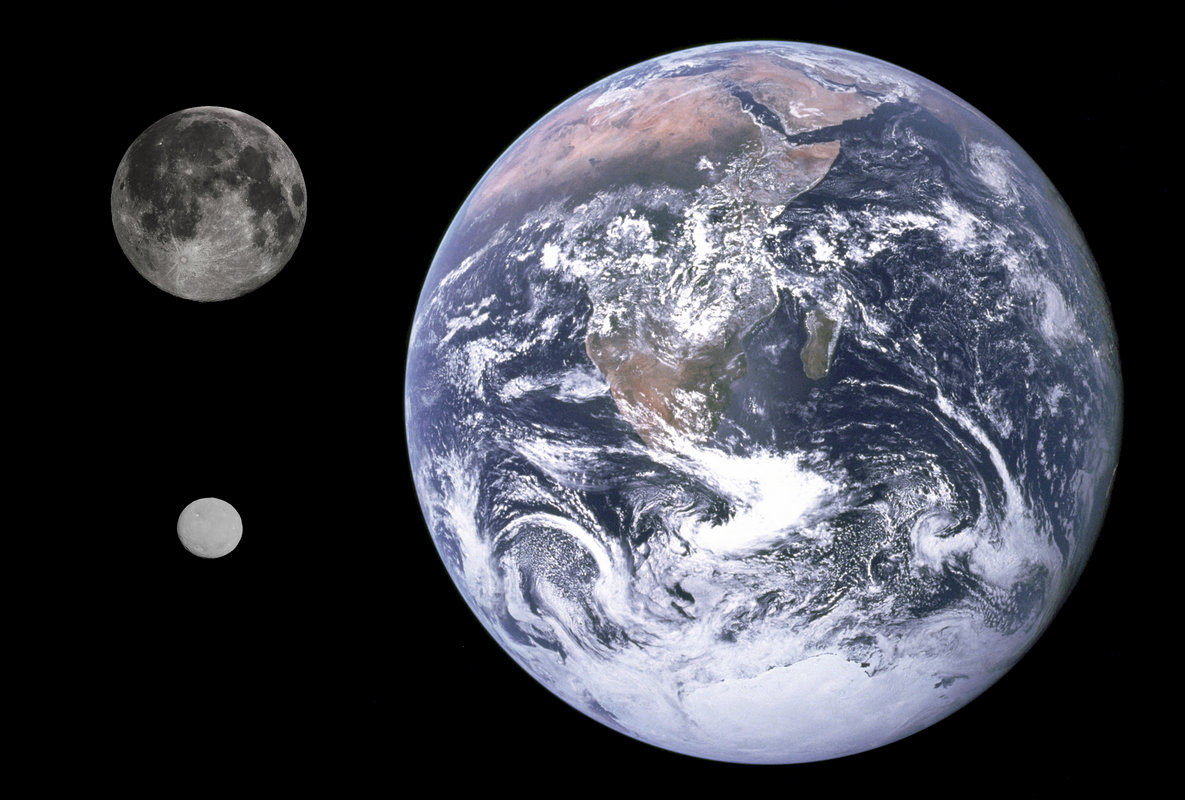 Ceres (lower left) in comparison with the Earth and the Moon
Ceres (lower left) in comparison with the Earth and the Moon
According to recent data from the Dawn probe, this dwarf planet has about 25% water in its composition. It is assumed that in the first millions of years of its existence, this dwarf planet had liquid water on its surface, some of which remained lying there in the form of ice. However, at the moment Ceres has neither a sufficient source of radioactive decay, nor massive neighbors sufficient for gravitational heating of its depths and surface (and the Sun is already too far there). Therefore, the presence in its depths of water in the liquid phase is very unlikely as well as any signs of life. However, the current state of Ceres does not exclude the birth and existence of life on its surface in the first moments of the existence of the Solar system, when the luminosity of the Sun did not fall in the process of its exit to the main sequence. And the traces of this hypothetical life that existed can be looked for.
Europe

Infographics 

The first suspicions about the presence of the subsurface ocean in this Galilean satellite of Jupiter appeared as a result of images taken by Voyagers in 1979, but the Galileo probe was only finally able to clarify these doubts after 14 long years. At the moment, it is reliably known that the thickness of the hydrosphere of Europe reaches 100 km, which gives an estimated volume of the ocean of this satellite (having a mass of only 0.8% of the mass of the Earth) 2-3 times larger than the volume of all the oceans of the Earth combined.
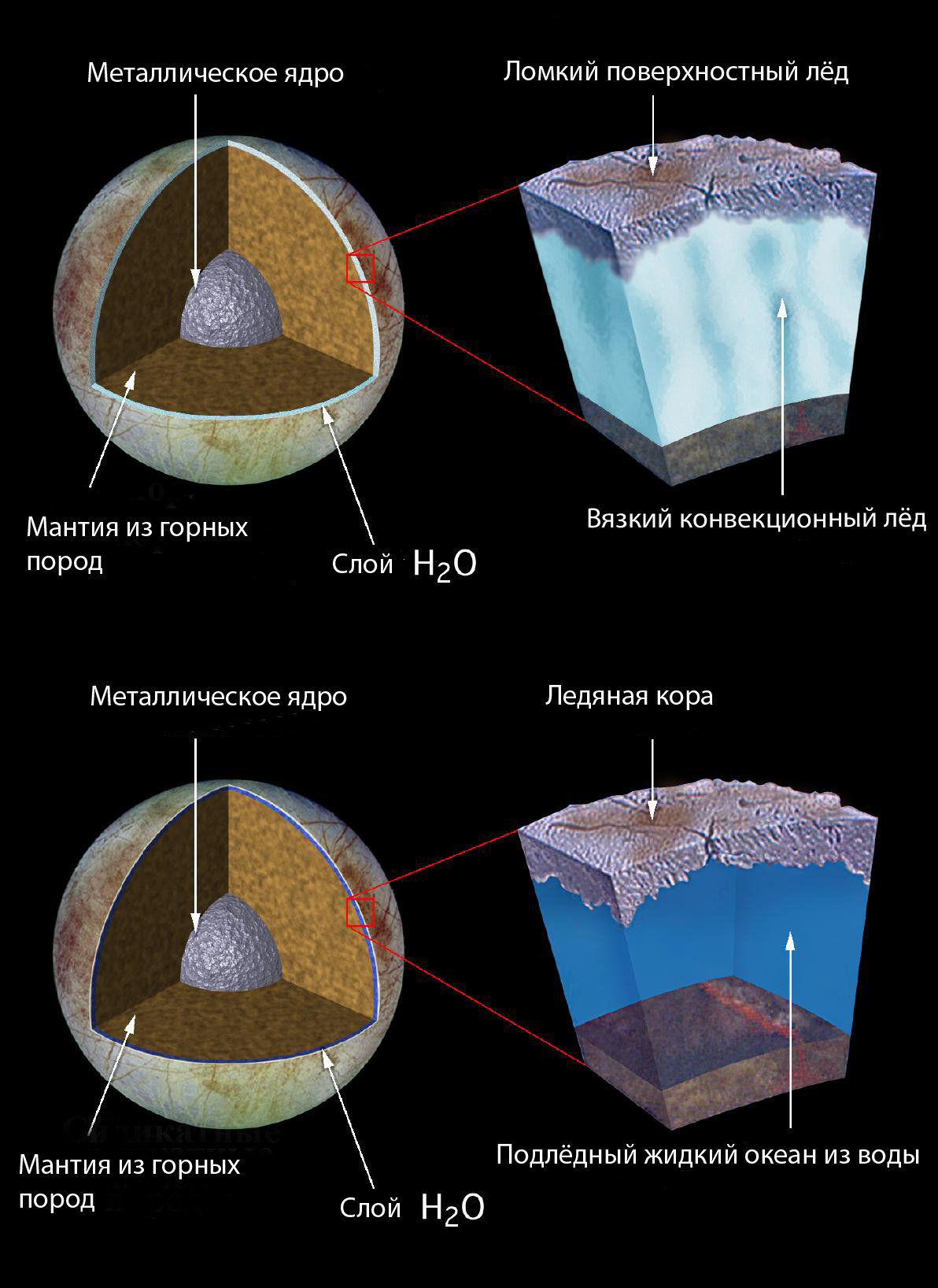
At the same time, according to one of the models, the entire thickness of the hydrosphere except for 10-30 km of the upper ice crust is in the liquid phase, and on the other, most of it is in a state of viscous ice. Due to the insufficiency of energy release of the gravitational heating model, most scientists are inclined to the second version, but it is known from the smooth surface of Europe that there is at least a certain amount of water in the liquid phase below the surface of this satellite of Jupiter.
At the moment, Europe and the rest of Jupiter’s Galilean satellites are rather poorly studied, as only two vehicles were sent directly to the Jupiter system studies: Galileo and Juno (currently working there). However, due to the fact that “Juno” and its instruments are directed mostly to the study of the magnetic field of Jupiter itself, quite a little is known about the suitability for life of Jupiter’s satellites. The nearest missions, which should bring greater clarity to our Europe device, Ganymede and Callisto should become the “JUICE” missions of the European agency ESA and the “Europa Clipper” of the American NASA, the launch of which is tentatively scheduled for 2022.
Ganymede

It also belongs to the number of 4 Galilean satellites and has a confirmed thickness of the ice mantle of about 800 km. Unfortunately, nothing is known about the thickness of its ocean, although its very existence has been reliably confirmed, and it is also known about it that it is differentiated by 4 salinity divided by ices of type I , III , V, and VI . Unfortunately, the thickness of the ice crust should be about 100 km, which excludes the possibility of its study in the foreseeable future.
Callisto
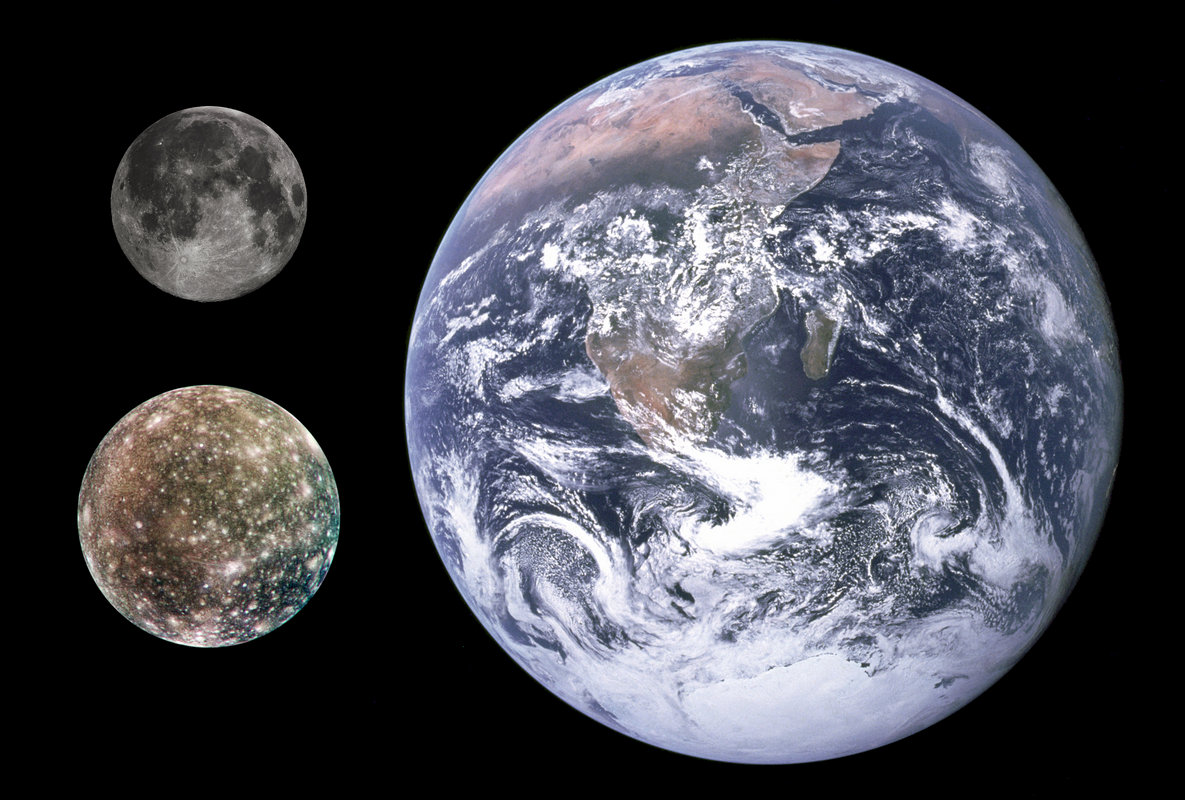
Under the surface of this satellite of Jupiter, there is an ice mantle with a thickness of about 80-120 km, in the depth of which the global ocean is located with a depth of at least 10 km. If there is ammonia or other antifreeze in the composition of this ocean with a concentration of up to 5%, the water layer can reach all 250-300 km. Approximately 25% of the satellite’s surface consists of ice, which in some places reaches a concentration of 80%, however, based on the data obtained, Callisto’s ocean seems to have never been associated with the surface, which makes it an unlikely place for life to origin.
Enceladus
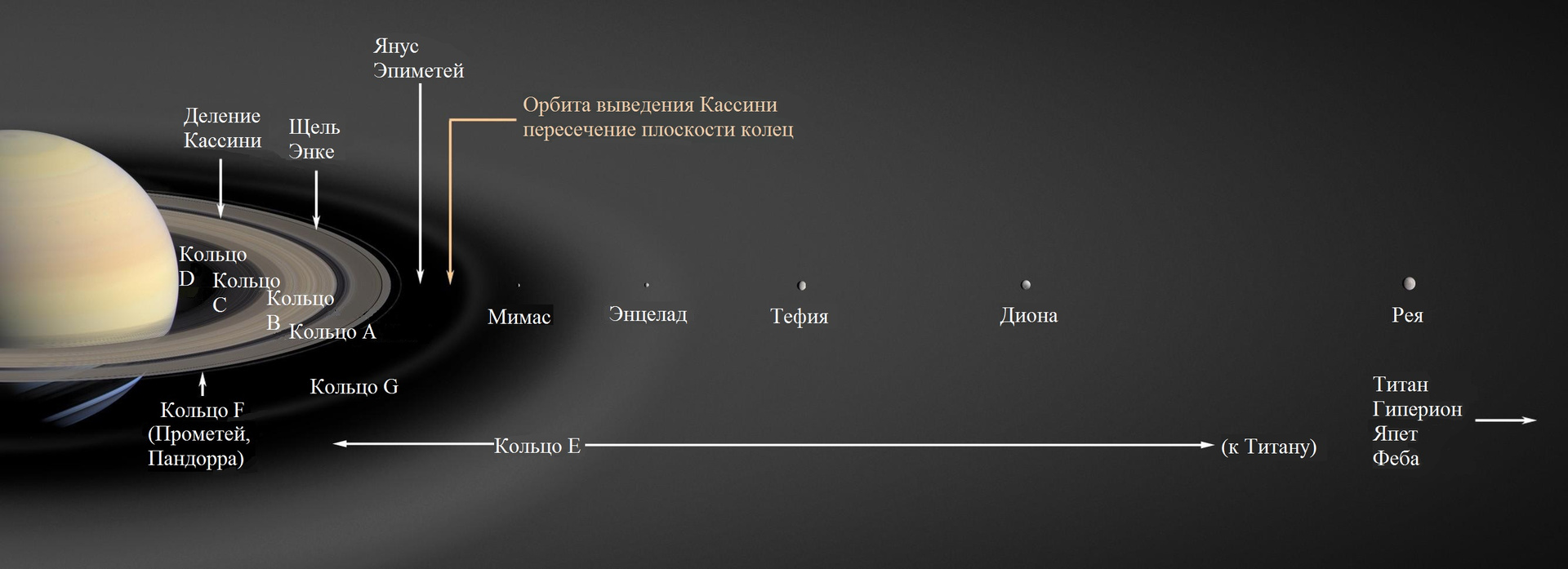
Almost immediately after the arrival of Cassini in the Saturn system, a source of matter of the widest ring of E of Saturn was discovered - they were the geysers of Enceladus. During the flight of this Cassini satellite, it was established that the substance ejected by geysers contains carbon dioxide and carbon monoxide, methane, propane, acetylene, formaldehyde and mineral salts, and the pH is 11-12 units, which is an acceptable condition for the existence of multicellular life forms of the earth. type
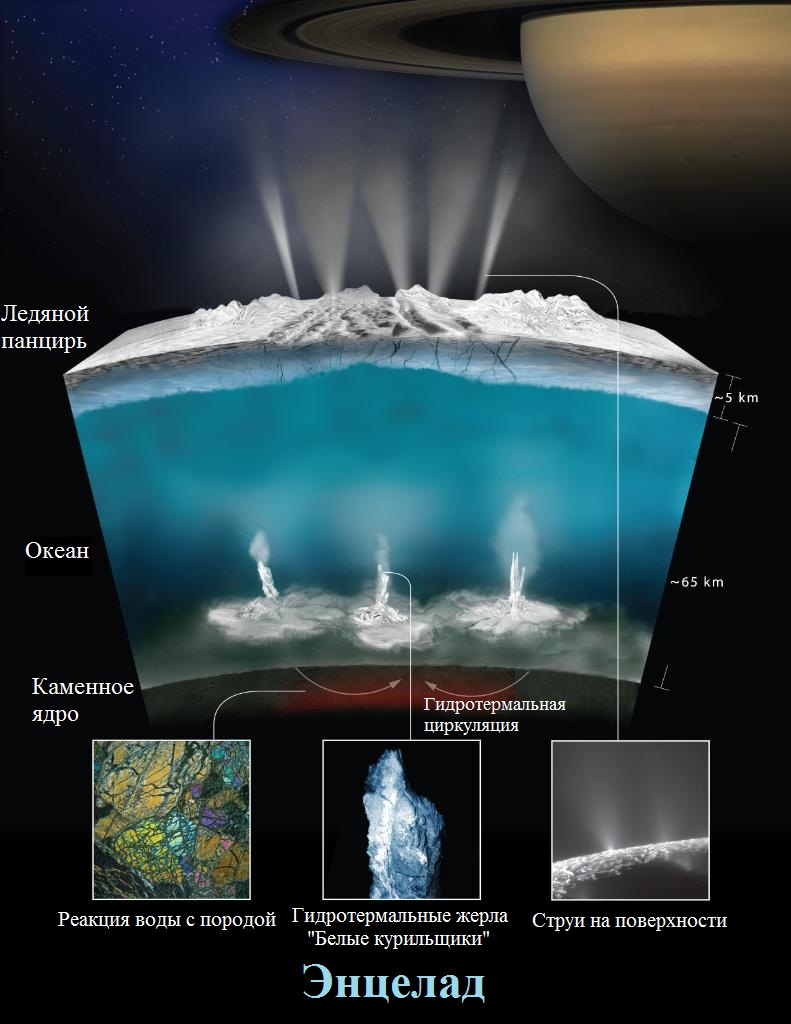
It is quite possible that complex organic substances were also present as part of the emissions, but it was already impossible to squeeze more of the probe’s devices, since at the time of departure on October 15, 1997, its creators only suspected the presence of subsurface oceans in Saturn’s satellites. Based on measurements of the influence of Enceladus on the trajectory of Cassini’s flight, a gravitational map of the satellite was compiled from which it became clear that it has a subsurface salty ocean stretching from the south pole of the satellite to 50 ° south latitude. The ocean has a depth of about 10 km and is located under an ice shell about 20-25 km thick, which in the area of the south pole approaches the surface to a depth of 1-5 km.
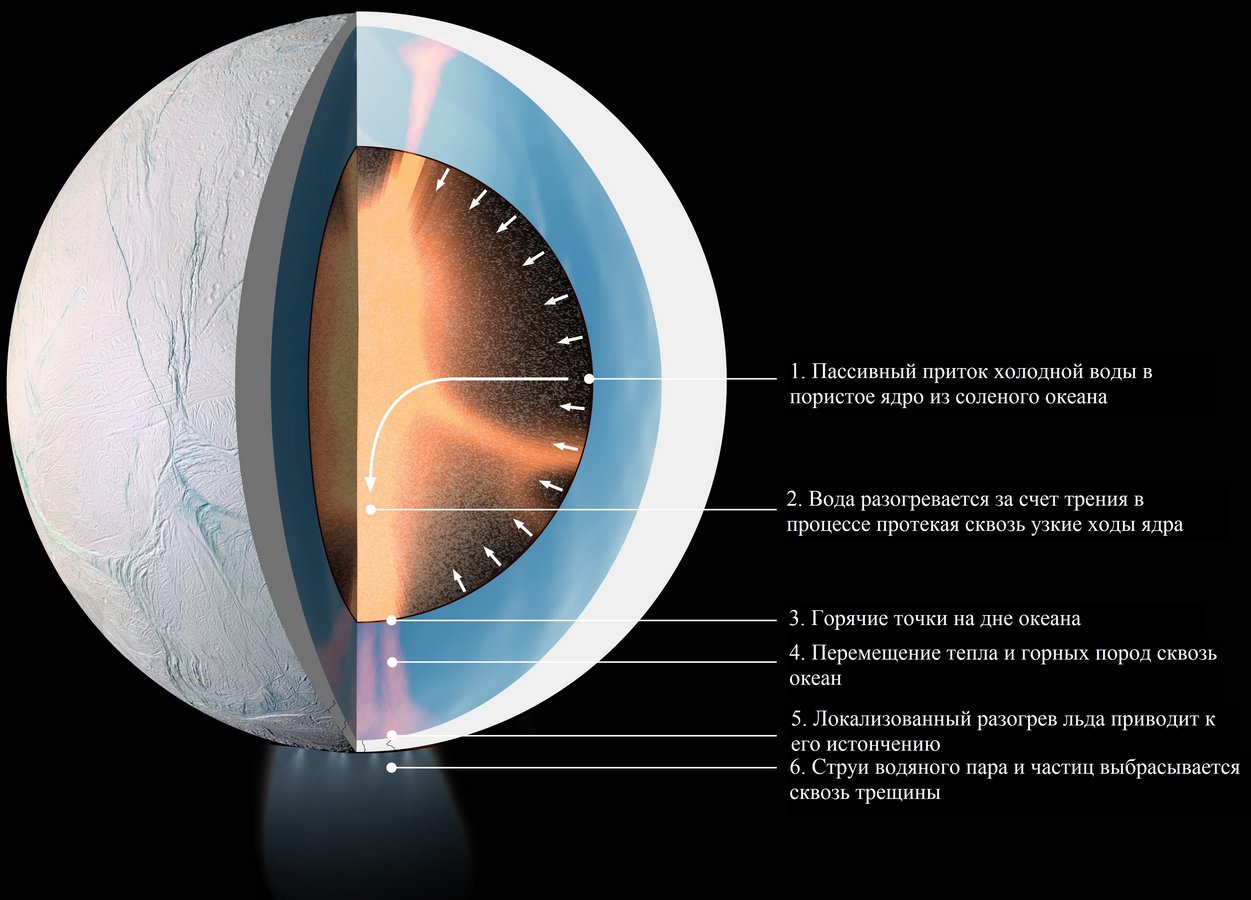
According to preliminary calculations of the energy released in the process of gravitational friction, there was not enough for the existence of a subsurface ocean with such parameters, and the natural decay of radioactive materials in the core could produce no more than 1% of the required energy release. However, a recent study showed that if the whole core of Enceladus in calculations was replaced by porous, then the energy released is quite enough for the observed ocean heating. And the chemical composition of emissions of geysers also indicated that it was formed during the interaction of water having a temperature of more than 90 ° C with rocks.
From various divisions of NASA and ESA, as many as 12 different missions were proposed, aimed at the study of Enceladus as a primary or secondary goal, but at the moment none of them have been accepted for implementation. Already on December 9, NASA begins a contest for the next stage of the “New Frontiers” program , among the 12 applications under consideration, two of which are directed directly to Enceladus's research. At the same time, by 2019, 4-6 missions should be selected for this program, which gives high chances that at least one of these two applications will win the competition and fly to Enceladus in 2025. In addition, the desire to launch the first private mission to Enceladus was expressed by Yuri Milner.
Titanium
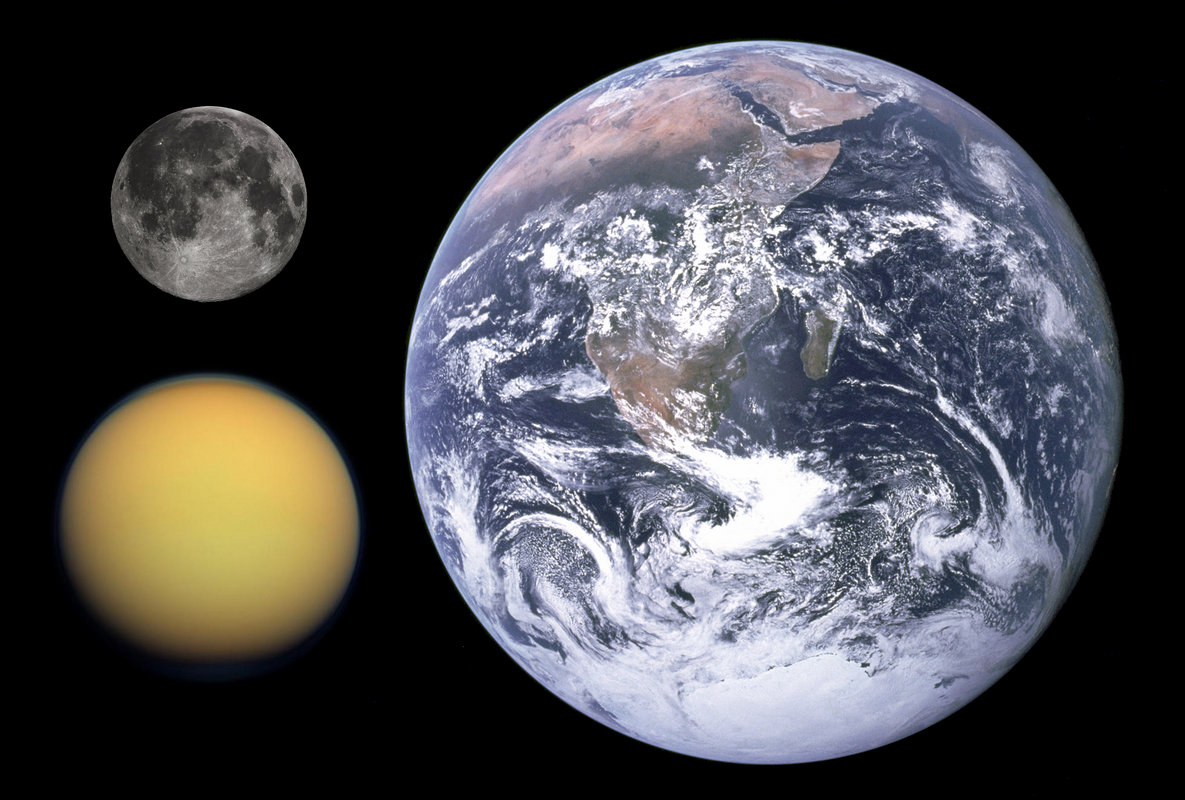
Cassini and Titan 

According to the recent Cassini probe mission, this satellite of Saturn was interesting not only because it is the only object in the entire Solar System that has liquid seas on the surface (with the exception of the Earth, of course), but also because of the drift detected by the Cassini probe surface of 0.36 ° for the year under the surface of the global ocean was discovered. The depth of the ocean is as much as 250 km, but due to the fact that it is sealed 50 km from the surface, it will obviously not be possible to reach it with a research mission in the near future.

According to precise measurements of the NASA probe trajectory, it was even possible to establish that the salinity of this ocean is close to the Dead Sea indicator of the Earth (in which, despite the ominous name, microorganisms still live). In addition, under the action of Saturn's gravitational influence on Titan, tides occur up to 10 m high (this was the second confirmation of the existence of the subsurface ocean, since otherwise the tides would have been no more than 1 m).
The descent of the Huygens probe to the surface of Titan
for the 2020s, the launch of the TSSM mission was appointed, which should be the ideological continuation of the Cassini-Huygens mission: this time it is planned to deliver a balloon to the Titan for atmospheric research
Mimas
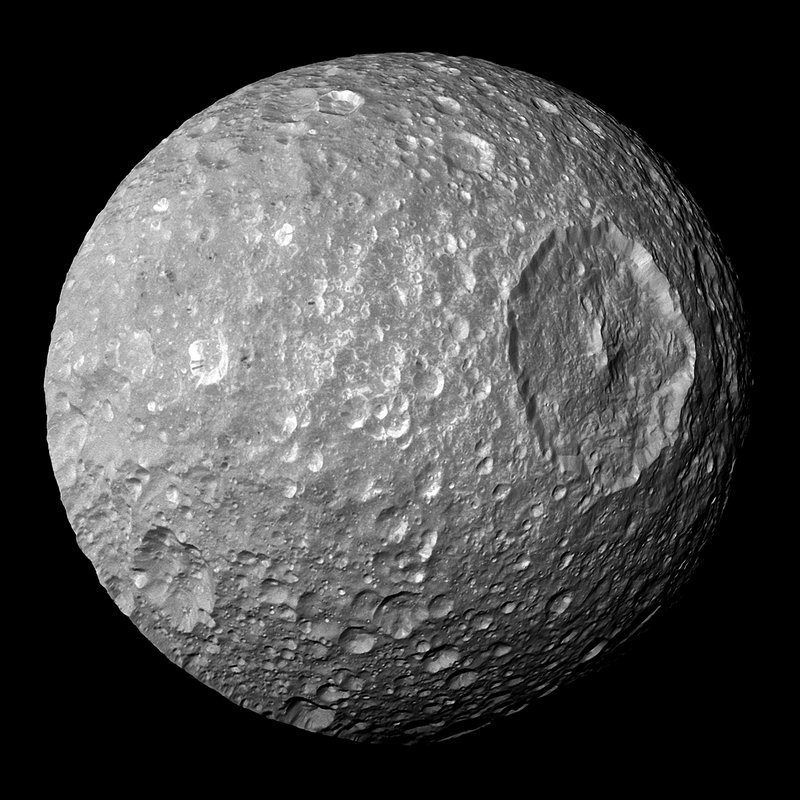
For its characteristic crater "Herschel" this satellite of Saturn since its discovery immediately received the nickname "Death Star". In reality, Mimas is 400 km in diameter, thus surpassing the first "Star of Death" from Star Wars 3 times, and being a little more than the second of them. It is supposed that it should have an ocean at a depth of 24-31 km under its surface covered with craters, but at the moment precise evidence of its presence has not been found.
Triton
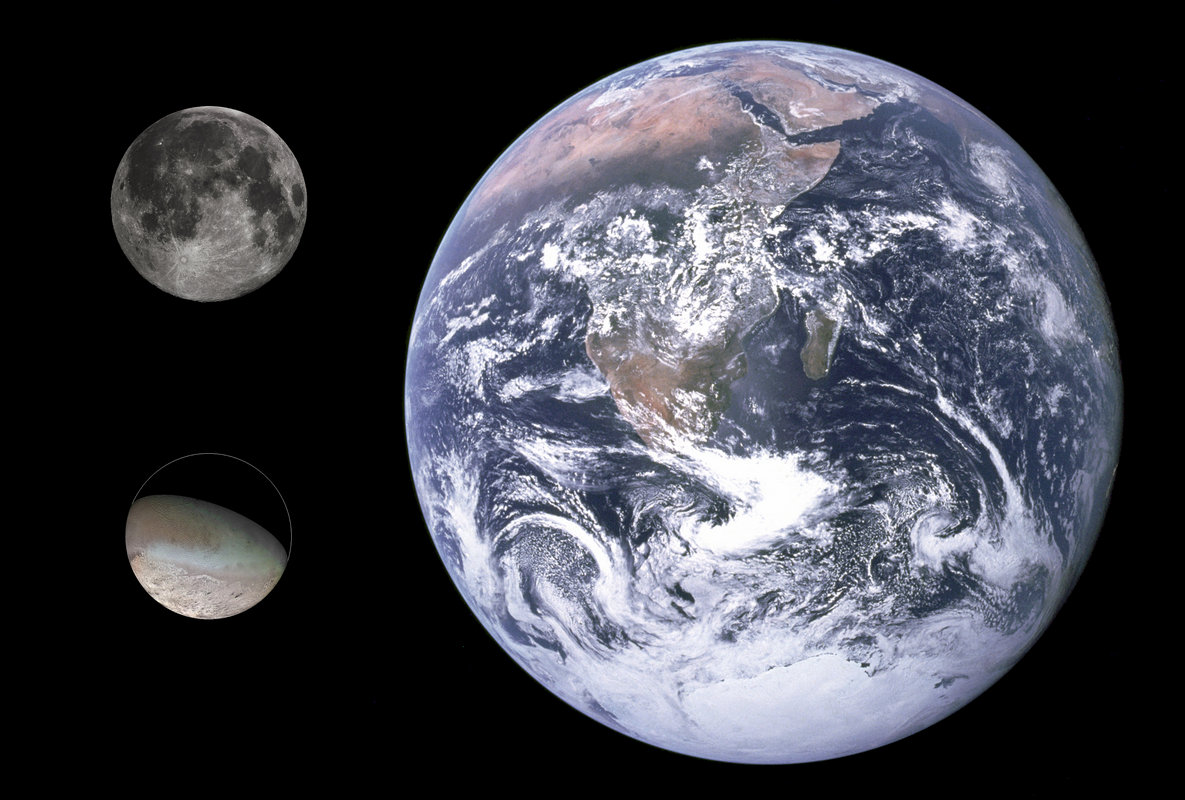
This satellite of Neptune was visited by an artificial object only once - when Voyager-2 flew past it on its way to the distant outskirts of the Solar System. For this reason, Triton is poorly studied: we have access to detailed pictures of only one of its sides. The presence of nitrogen geysers is confirmed on its surface and the presence of a subsurface ocean from a mixture of water and ammonia is assumed, but due to the large remoteness of this satellite from the Sun, the presence of known life forms on it now or earlier is practically excluded.
Pluto
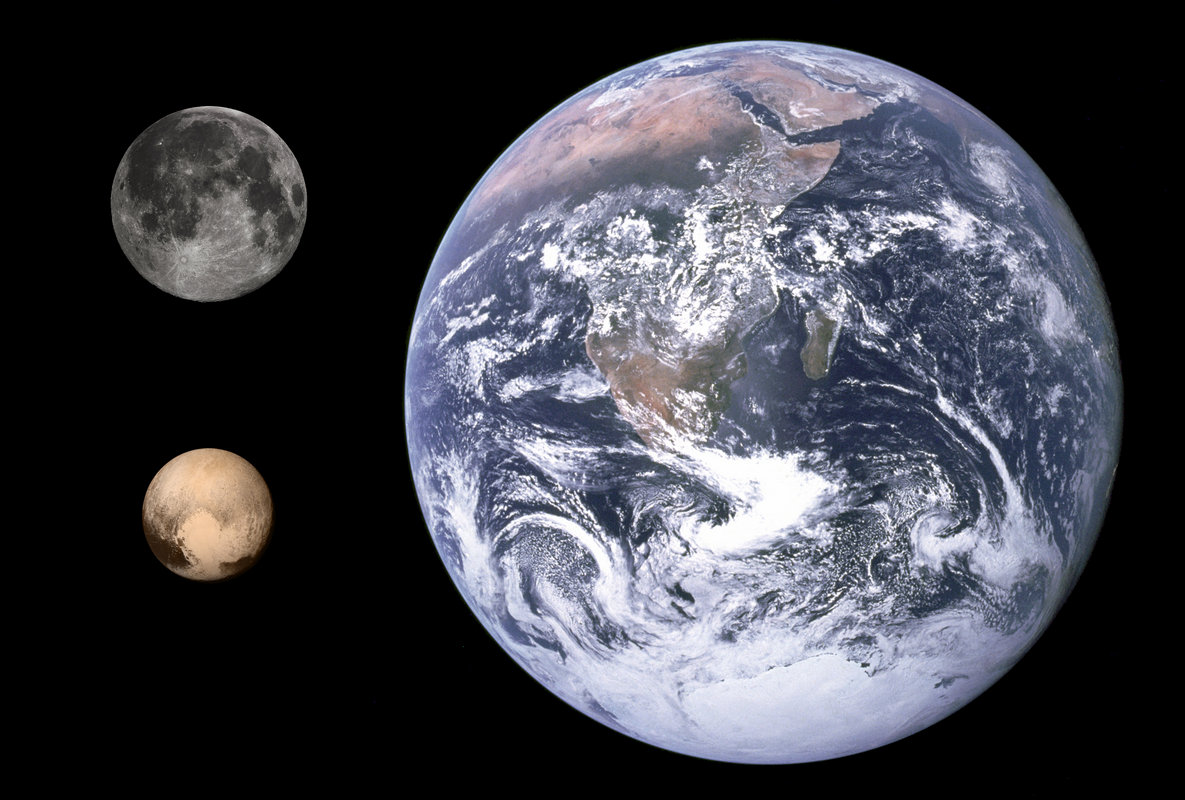
This recently demoted “large” dwarf planet has a very rarefied atmosphere (with a surface pressure 600 times lower than Mars ). It is assumed that Pluto should have enough internal heat to exist under the ocean surface of liquid water, if there is a sufficient concentration of antifreeze. However, the recent passage of the “New Horizons” past him could not give an unequivocal answer to this question.
Current news
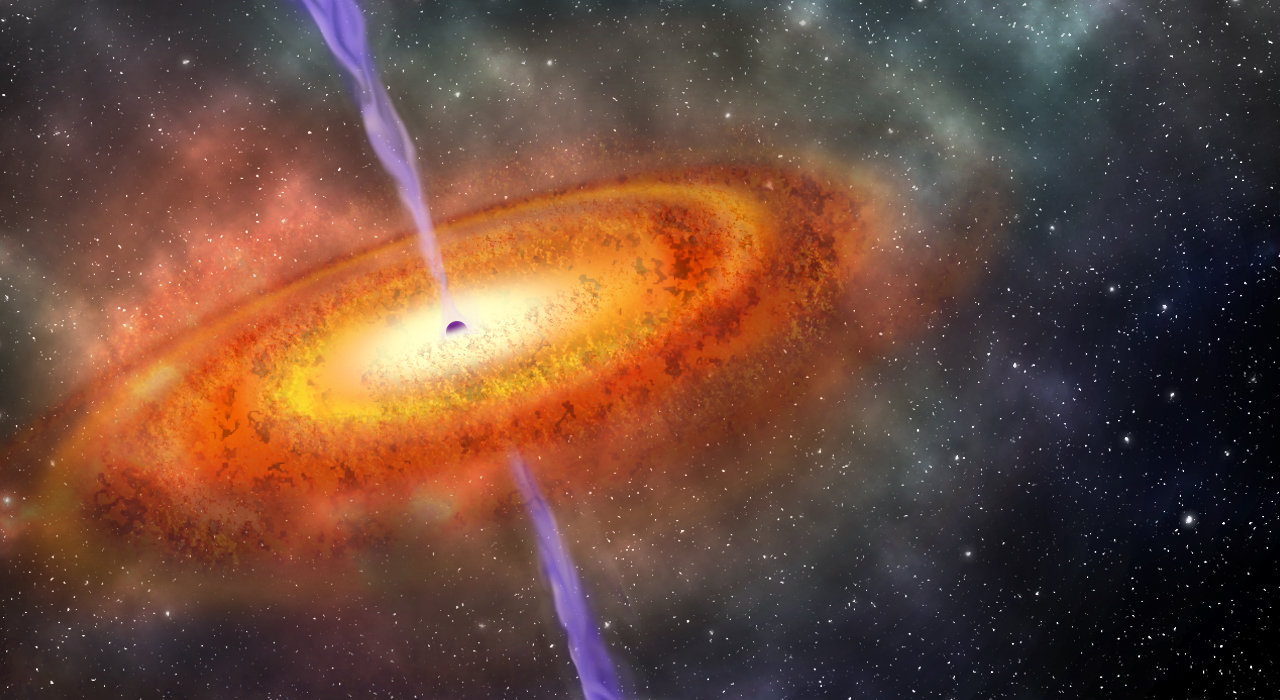
Literally today, data on the discovery of the most distant black hole found at the moment were published : it has a mass of 800 million masses of the Sun and is only 690 million years old from the Big Bang. This discovery poses serious questions for cosmologists, since it means that the unevenness of the density of the Universe grew orders of magnitude faster than the theories of its origin provide.
Due to the installation of a hard limit on the cost of the project of the “James Webb” telescope of $ 8 billion - its launch was also postponed for six months (in the spring of 2019). However, the work in spite of everything goes on: so recently tests in the pressure chamber were completed without comment and 13 applications were received for the first six months of operation of this telescope.
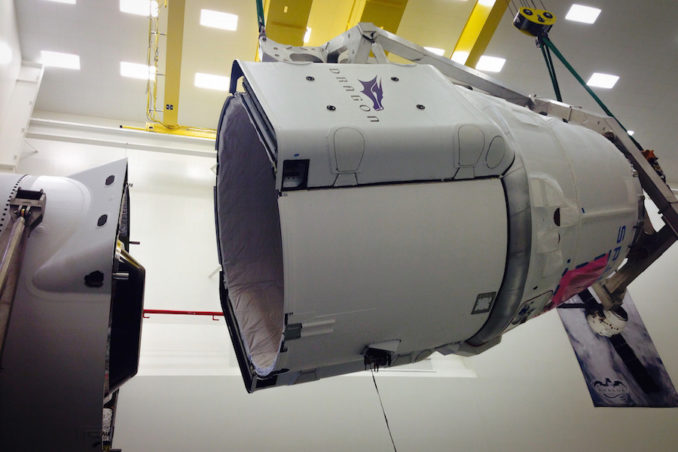
The launch of the CRS-13 (in which both the first stage and the ship should be re-used) was postponed from December 4 to the 8th , and before the end of the year another launch of the Falcon 9 with 10 Idiridum NEXT satellites is scheduled. And the first launch of Falcon Heavy unfortunately "moved out" on January 2018. Roscosmos before the end of this year also scheduled another 2 start. Thus, if everything goes smoothly both here and in the USA, then by the end of the year SpaceX will lag behind Roskosmos by 3 launches, and by only 2 if we consider only successful launches.
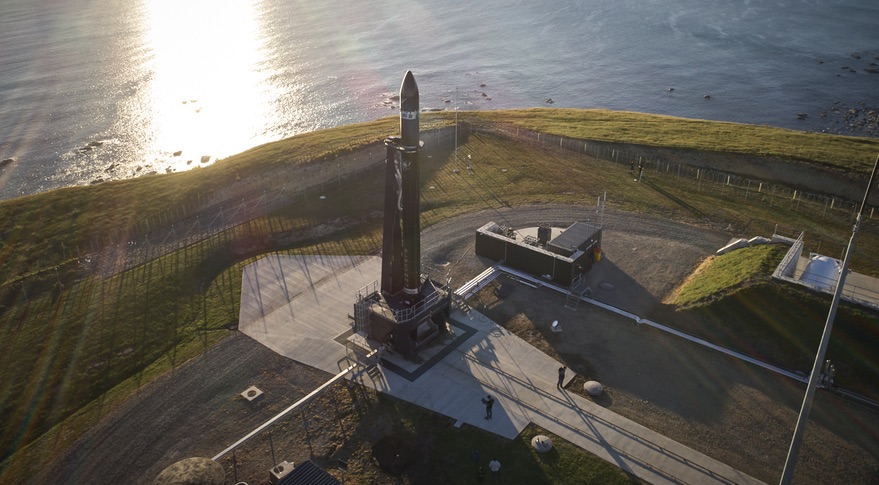
The second launch of the rocket "Electron" from Rocket Lab should also occur on December 8 (at 4.30 am Moscow time). And as promised by the representatives of the Rocket Lab itself - for the first time it will be broadcast live.
The European Space Agency allocates $ 63 million for the creation of a new launch vehicle of the lightweight class Vega-E and another $ 43.7 million for the construction of an unmanned reusable vehicle with a payload of up to 800 kg and a residence time in space of up to 2 months.
The Indian mission Chandrayaan-2 should be launched to the Moon in March next year.
Despite congressional warnings about possible consequences, the first launch of the SLS launch vehicle was nevertheless postponed to 2020. Delays in launching the first SLS modification also led to the launch of the Europa Clipper from 2022 to the right, as the upgraded version of SLS required for this mission will also be ready with a delay.
All Articles
